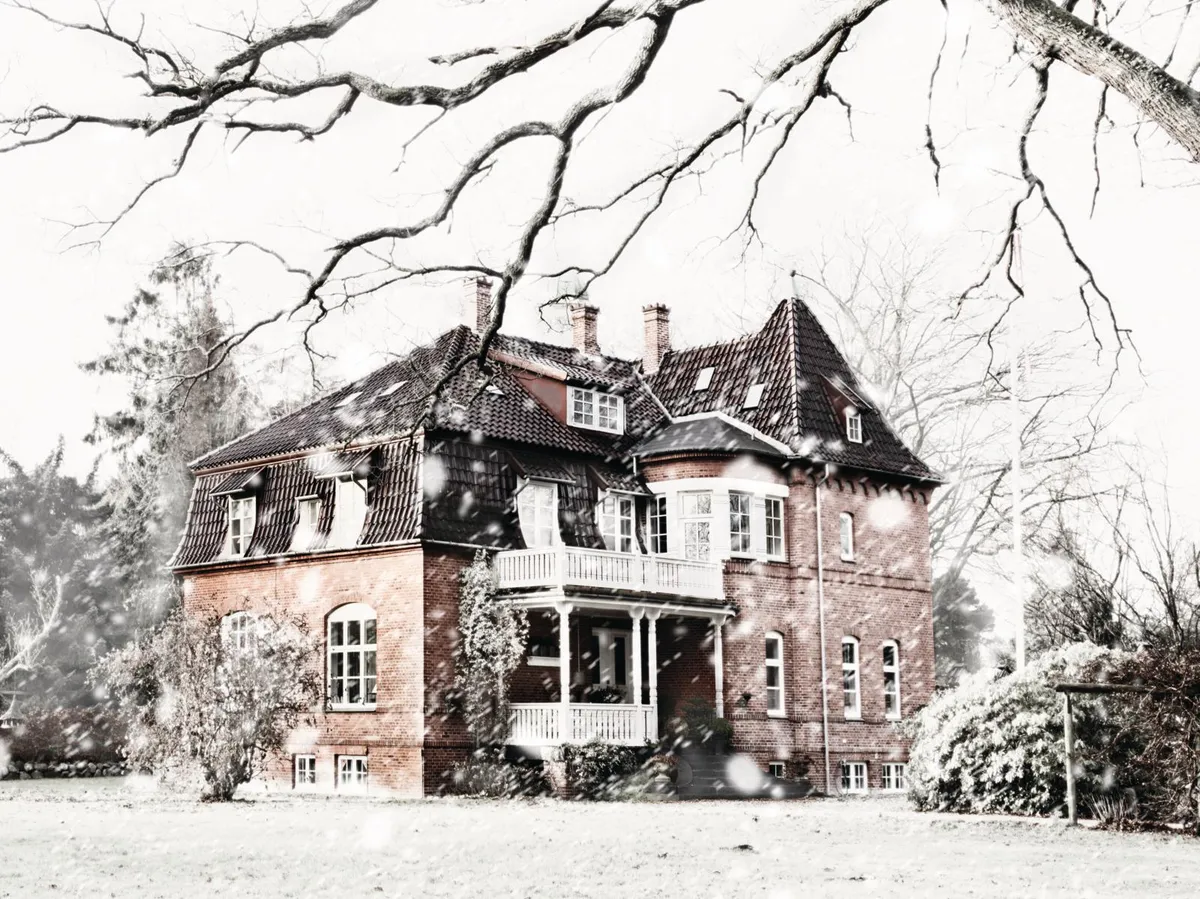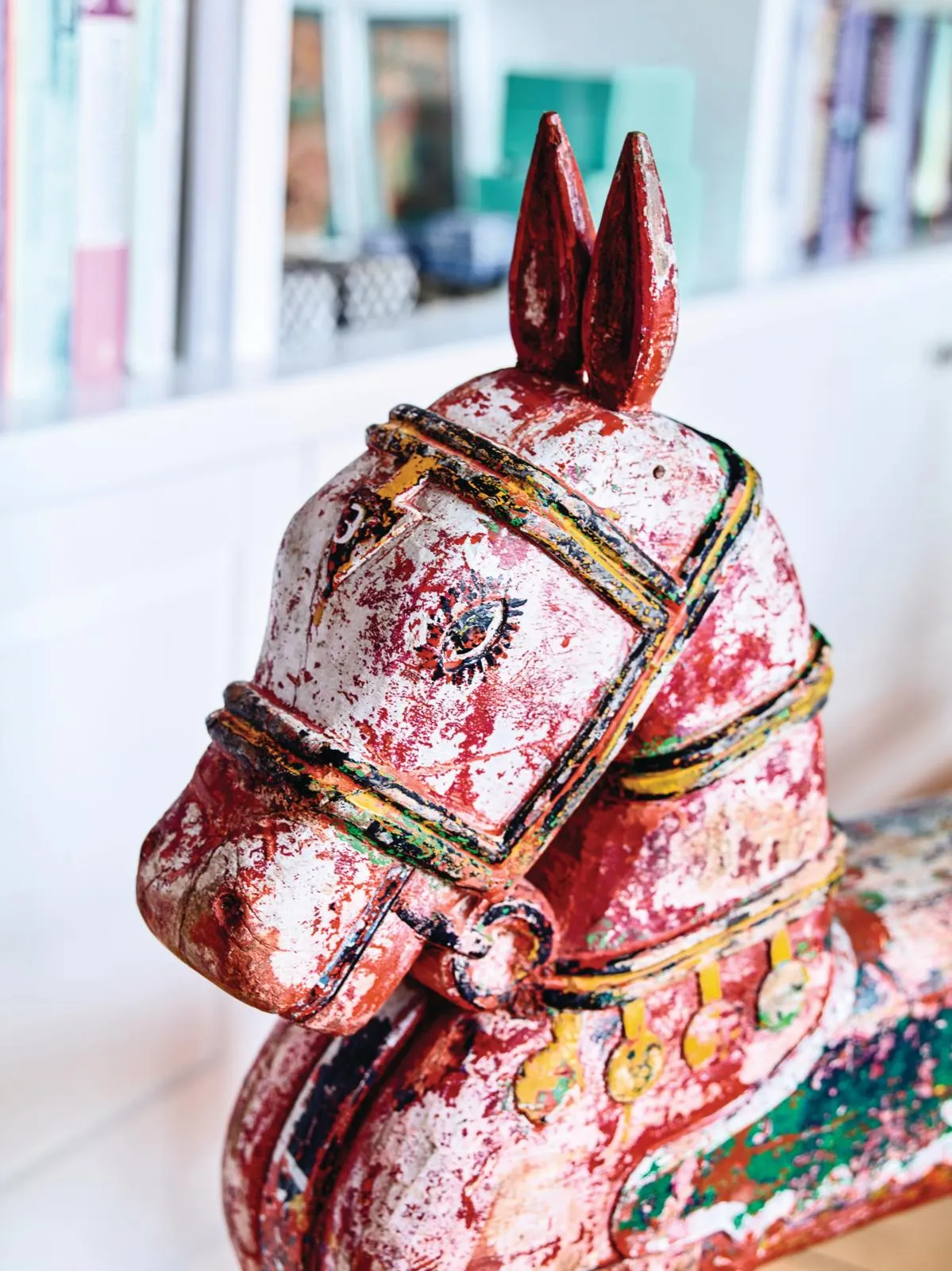While most people take holidays to escape their day jobs, it would seem the original owner of Niels Henrik Hansen’s house was never off duty. A wealthy shipping merchant, he not only chose to build his summer residence within sight of the coast, but he also insisted on high attic windows from which he could keep an eye on his business far out at sea.
At some point after the building’s completion in 1907, his fortunes must have failed because despite his diligence, the house was sold off and turned into an old people’s home. By the early 1990s, when Niels Henrik first spotted it, the property had been boarded up and abandoned.
Surrounded by extensive parkland with a lake, the building became a favourite landmark on his regular running route through the woods around Hornbaek, a fashionable seaside resort an hour north of Copenhagen. Intrigued by what he glimpsed through the trees, Niels Henrik leapt at the chance to take a look around when, one morning in 1993, he spotted a ‘For Sale’ sign.
Although clearly in a sad state of repair, the quirky architectural style, unusual roofline, verandas, balconies and high attic windows won Niels Henrik over instantly. But beyond the grand exterior, the interior had been stripped of all charm: the once-elegant, high-ceilinged rooms had been unsympathetically divided, their walls covered with gloss paint, the wooden floors hidden under lino.
It was clearly going to be a huge project, but Niels Henrik was undaunted and he moved in and got to work on the basics. However, it wasn’t until he met his wife, Christina Thorbøll, the co-owner of stylish interiors and accessories company Oi Soi Oi, that the project really took off. ‘We both have children from our previous marriages,’ she says, ‘and it was clear the house would be perfect for our family of seven.’
Together, the couple spent five years working their way through the space, room by room, thoughtfully bringing the neglected building back to life: original wainscots, stucco and panelled doors were restored to their former glory. Windows, walls, ceilings, doors and panelling were painted white, ‘in the best summer-residence tradition.’ Linoleum flooring was pulled up to reveal the beautiful floorboards hidden underneath. Now cleaned and sanded, the wood floors are the perfect foil to the kilims and rugs that the couple have chosen to use throughout their home.
‘We didn’t stick to a specific look in our interior design,’ says Christina, explaining that they preferred to mix various styles together, ‘in order to live with the things we like.’ For Niels Henrik that means antiques. ‘He’s passionate about old things,’ says Christina. ‘He usually finds his treasures at auction and in flea markets. He likes restoring the things he finds – the chandeliers and the old ship in the window of the conservatory.’
Christina’s aesthetic is more contemporary and she particularly admires classic Danish designs, such as the 1950s Arne Vodder recliner in the sitting room. Both like to pair their antique and vintage furniture with ethnic pieces, which are either gathered on their travels or sourced as part of Christina’s interiors business.
Together they have created a very personal look that is an elegant blend of Scandi simplicity with tribal pattern and colour. ‘I call it Nordic exotic,’ says Christina, explaining how the clean lines and neutral tones are the perfect backdrop for the colourful, decorative designs she has collected from places such as Vietnam and India. As well as being beautiful, their possessions have great sentimental value, says Christina, which she feels is essential in order to create a sense of ‘harmony, cosiness and comfort.’
Cosiness, or hygge, as it is in its Danish form, is something all Danes strive for in the run up to Christmas, and Niels Henrik and Christina are no exception. From early December there is a small Christmas tree in the sitting room and they collect cones, moss and larch branches from the grounds around the house. ‘I prefer nature’s own decorations rather than a roar of vivid colour. I want it to be beautiful in all its fairy-tale simplicity,’ she says.
One of her favourite traditions involves the arrival of a second, much larger tree on Christmas Eve. ‘We go to a local farm and cut it down. It’s always far too big,’ she laughs, ‘but decorating it keeps the children busy.’ While the younger generation deal with the tree, the adults prepare a roast duck, which is eaten on Christmas Eve.
In all likelihood, Christina and Niels Henrik are playing out the same traditions as the first family who lived in the house over a hundred years ago.










